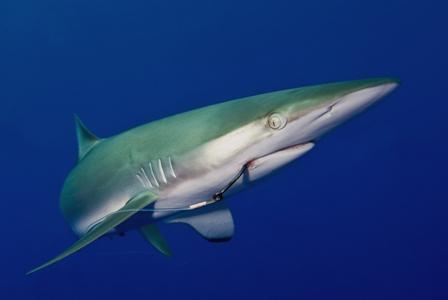
The dusky shark is currently listed as Vulnerable by the IUCN, but populations continue to decline. The dusky shark is one of the slowest-growing, latest-maturing sharks, bearing small litters after a glong gestation period. These characteristics make the shark especially vulnerable to depletion by fisheries. In the Northwest Atlantic, dusky sharks began to decline in the 1970s, when they were targeted by recreational fishers. They continued to decrease due to directed catch in US shark fisheries in the 1980s. Dusky sharks are now protected in US waters, but their population has continued to decline. Dusky sharks are often caught as bycatch by longlines, nets, and trawls and have a high mortality rate when caught. The dusky shark is most commonly caught in pelagic longline fisheries. Between 1992 and 2000, dusky sharks were the second most commonly caught elasmobranchs in the US pelagic longline fishery (Beerkircher et al 2002). The dusky shark is also among the most highly sought after for its large fins, which are sold for shark fin soup. Dusky sharks that are incidentally caught in tuna and swordfish fisheries are often landed for their fins instead of released.
References
Beerkircher, LR, E Cortes, and M Shivji. 2002. Characteristics of shark bycatch observed on pelagic longlines off the southeastern United States, 1992-2000. Marine Fisheries Review 64(4): 40-49.
